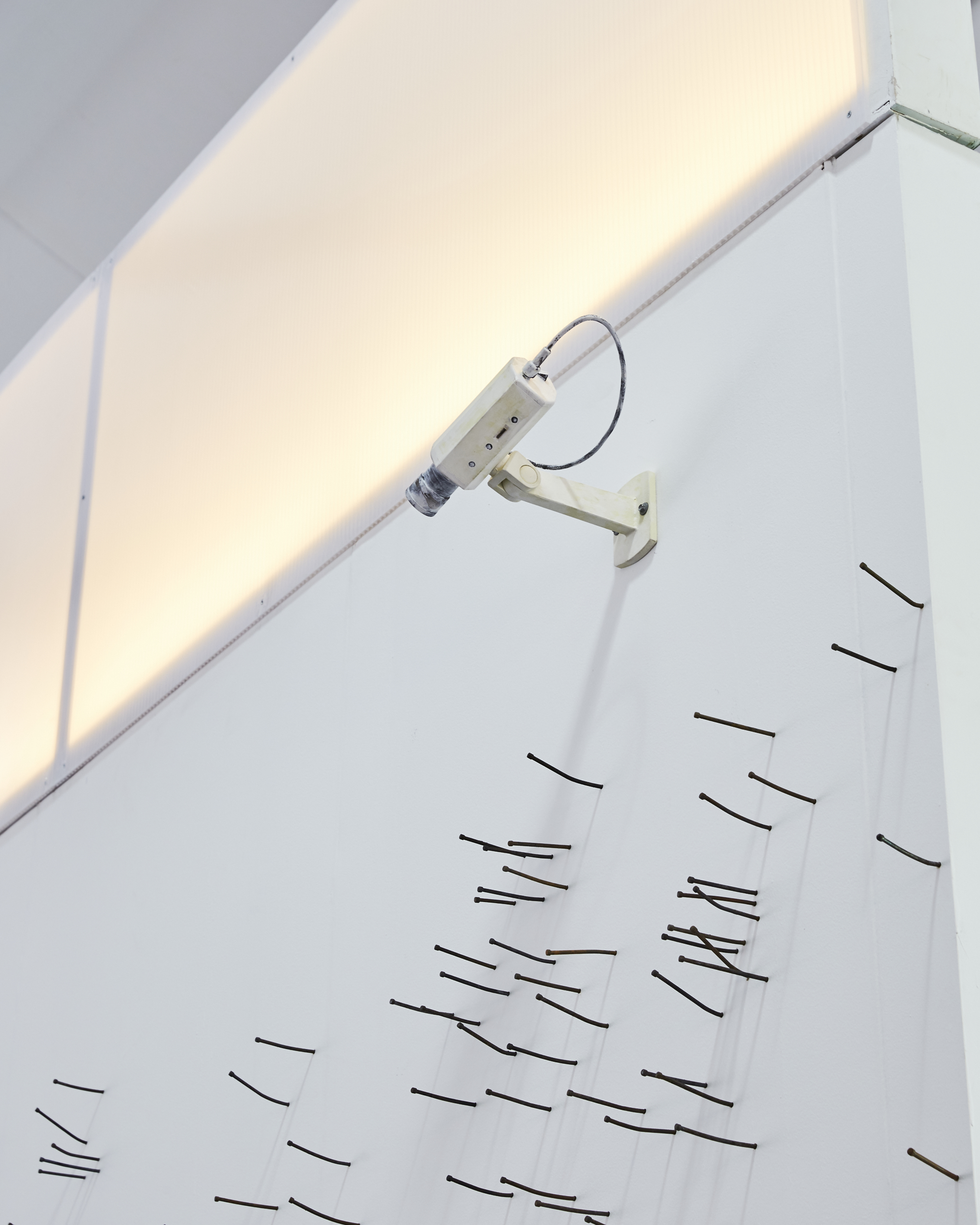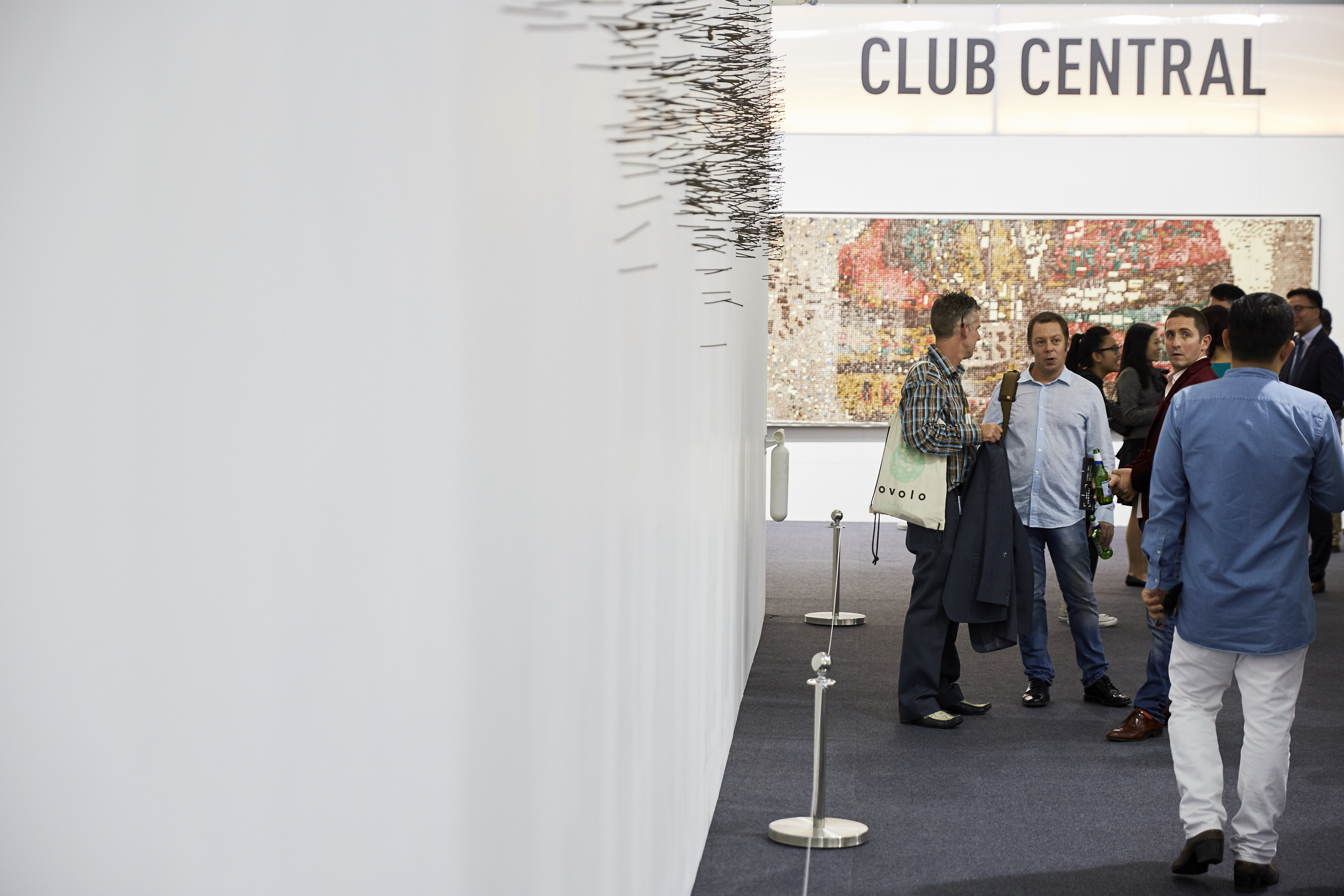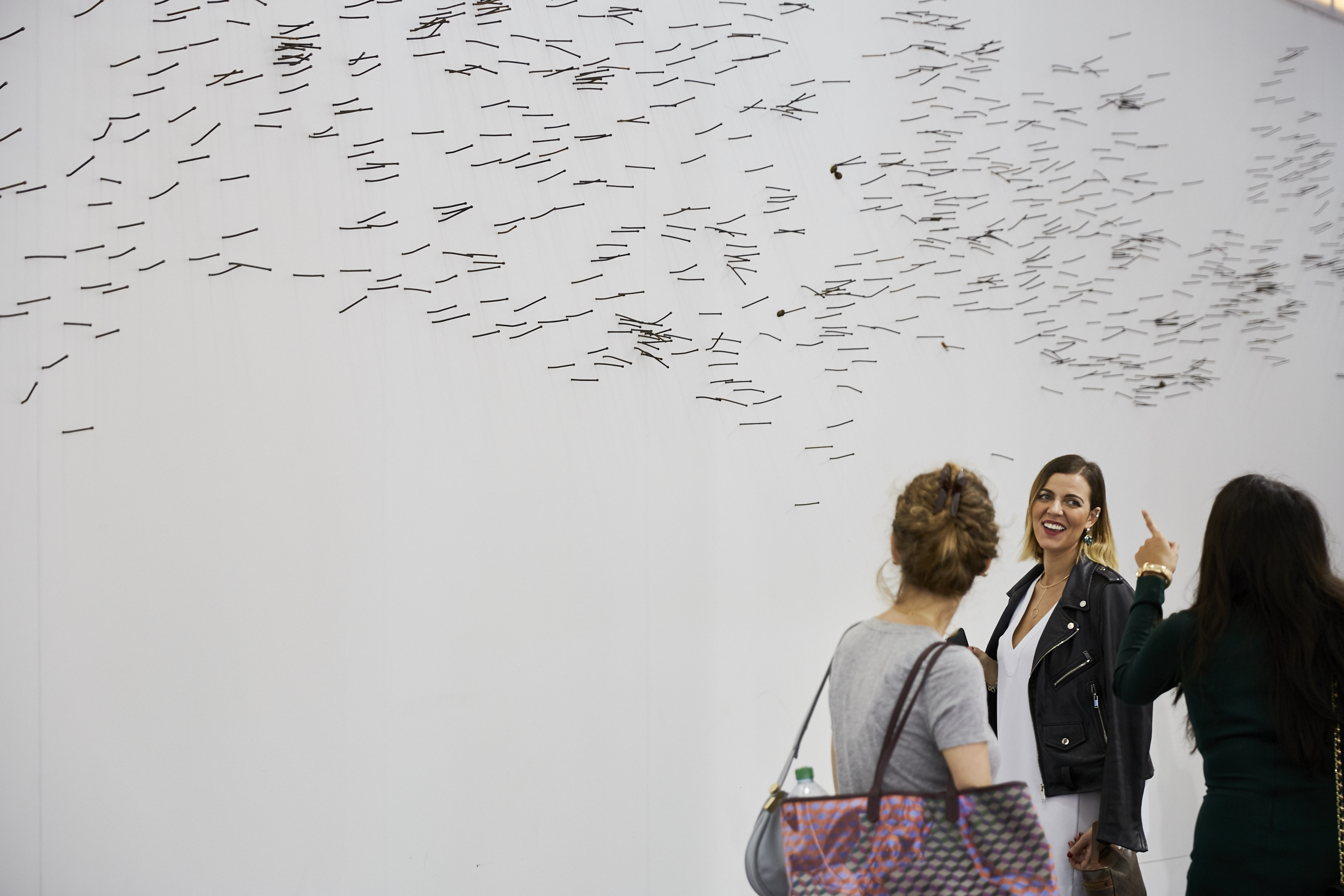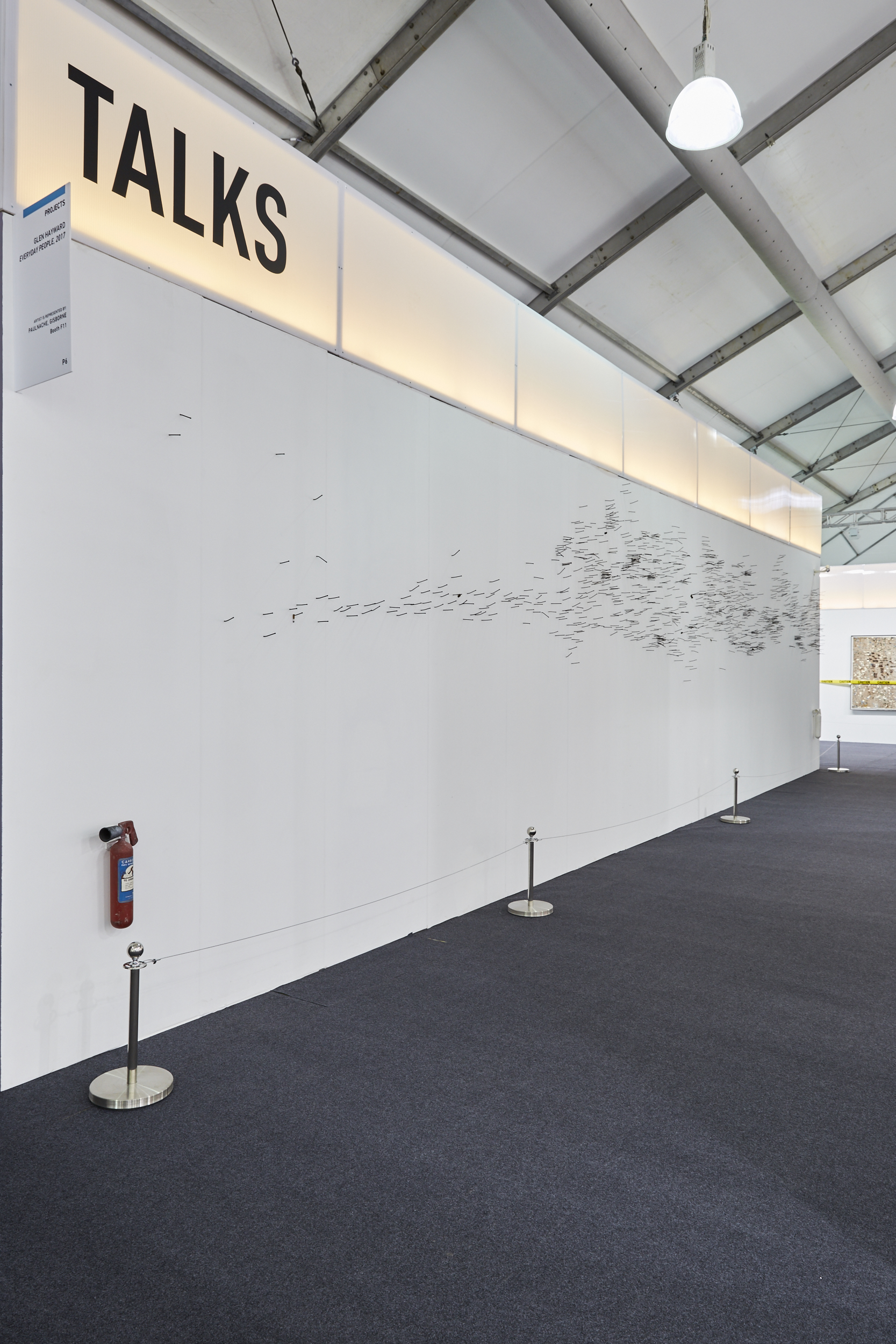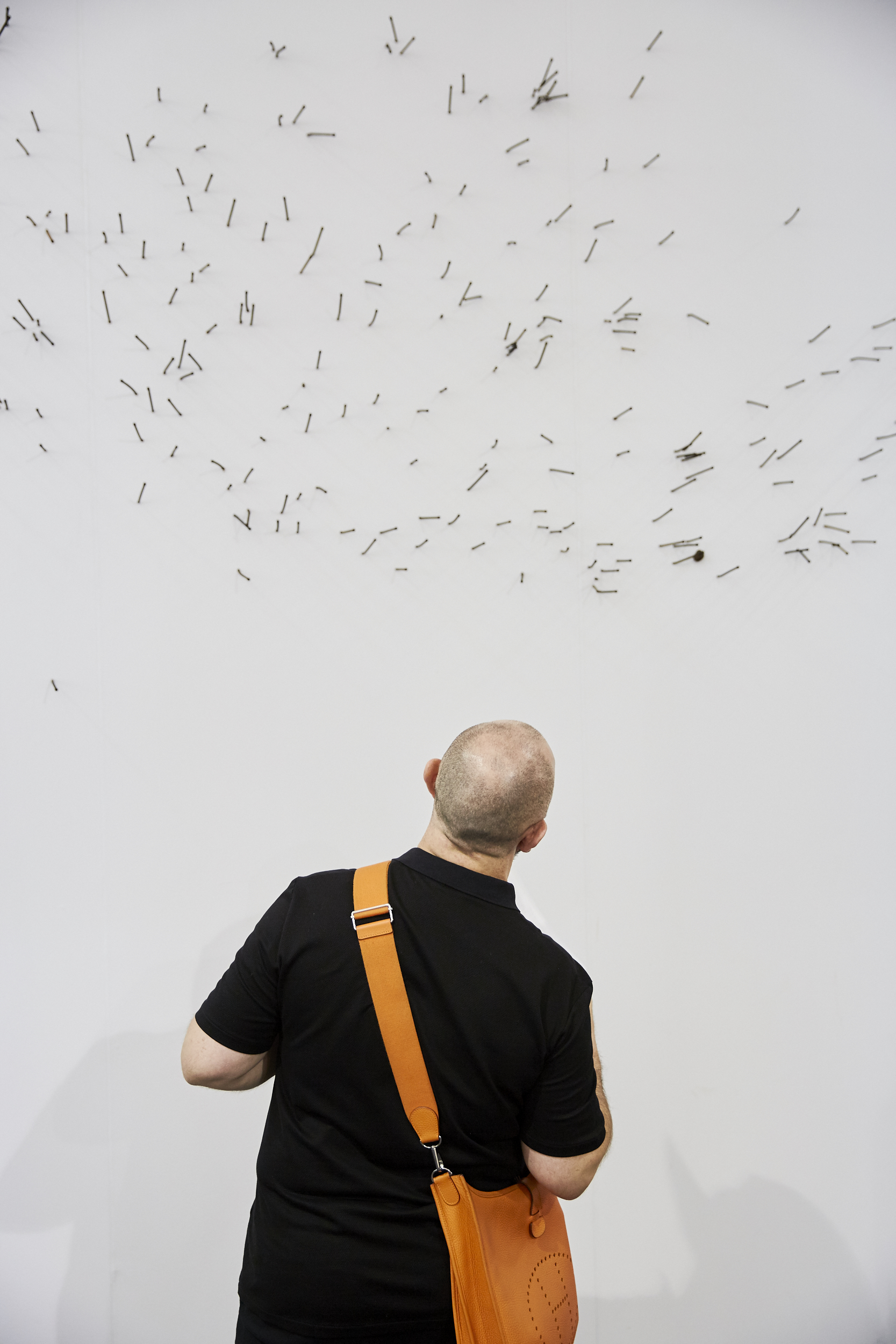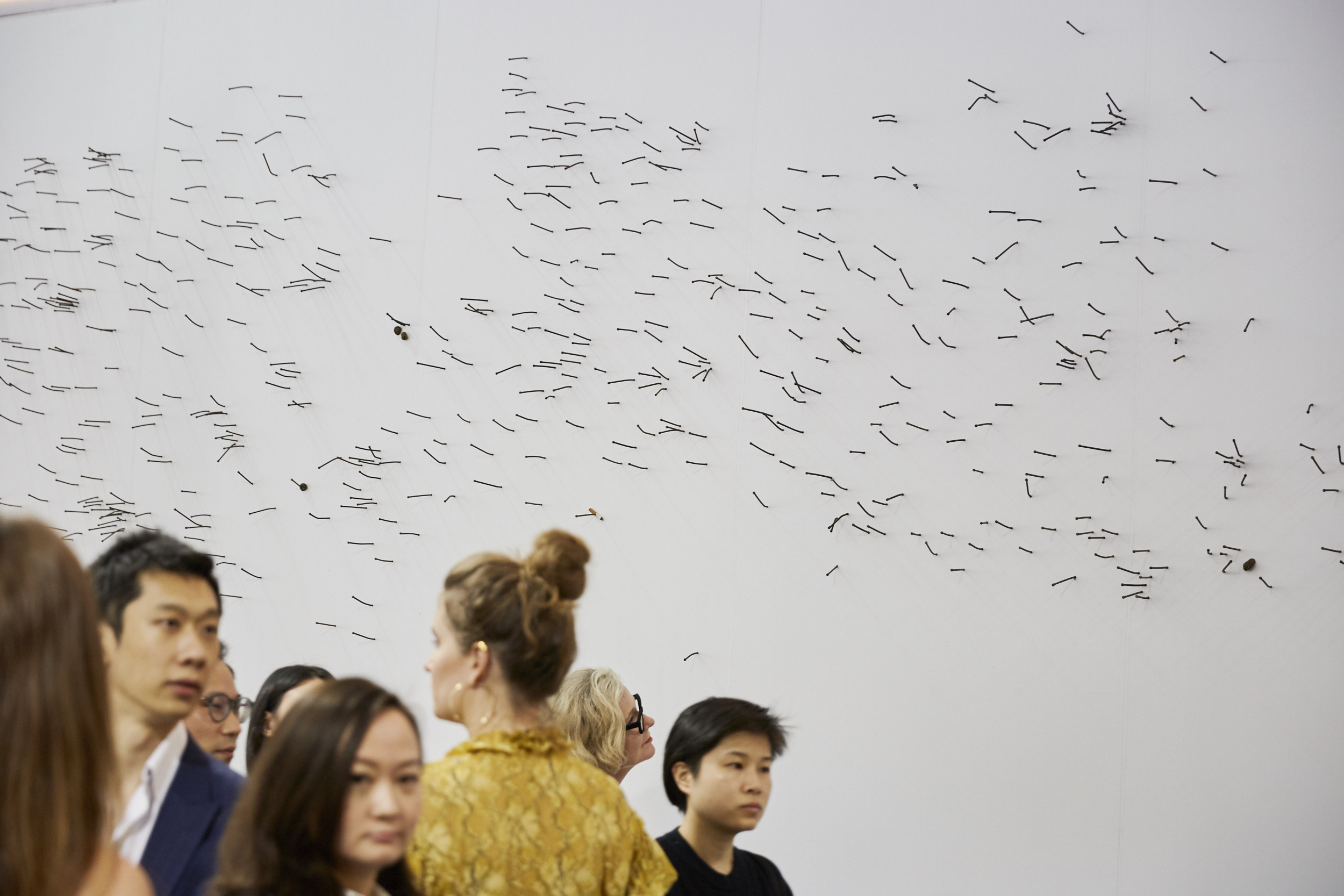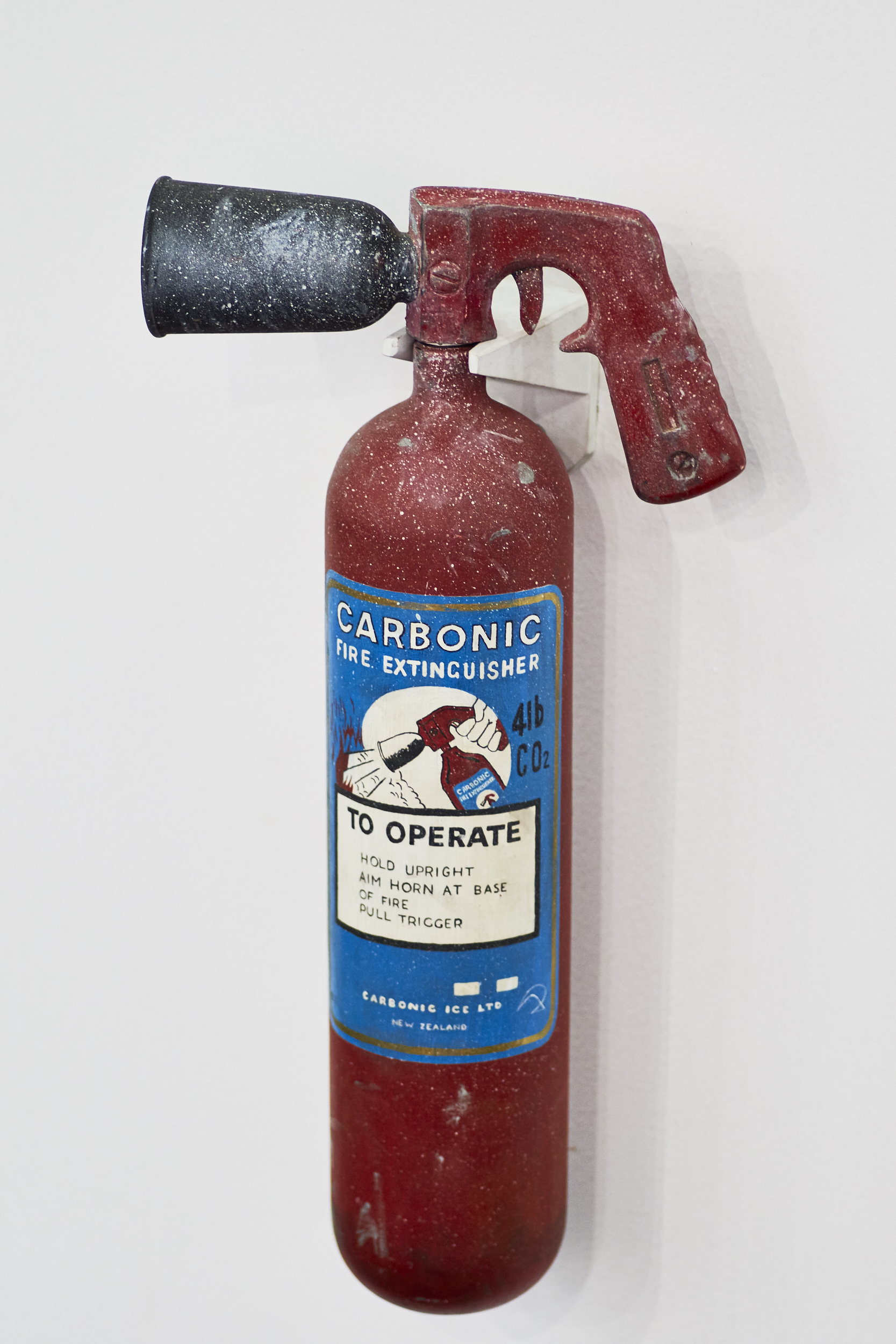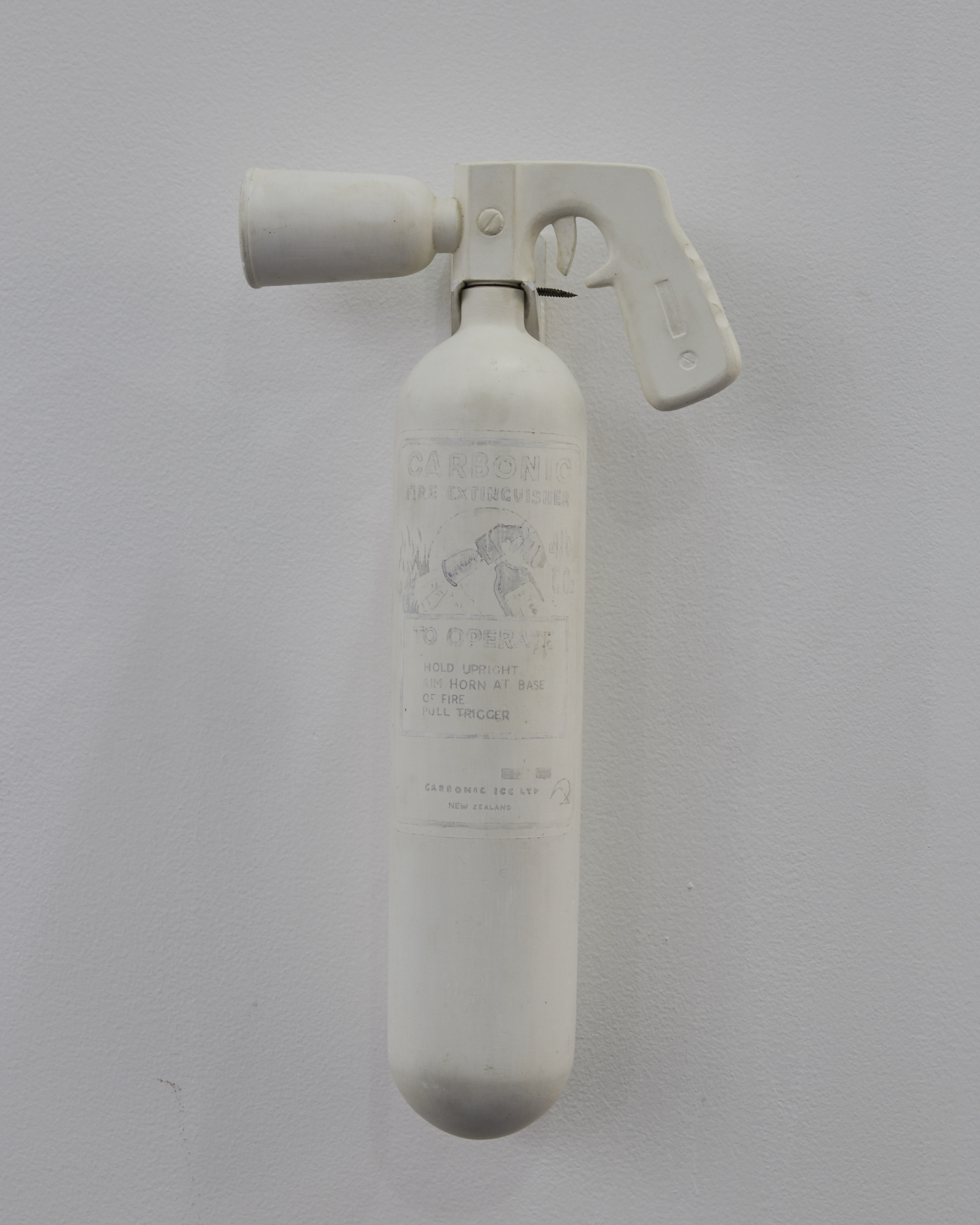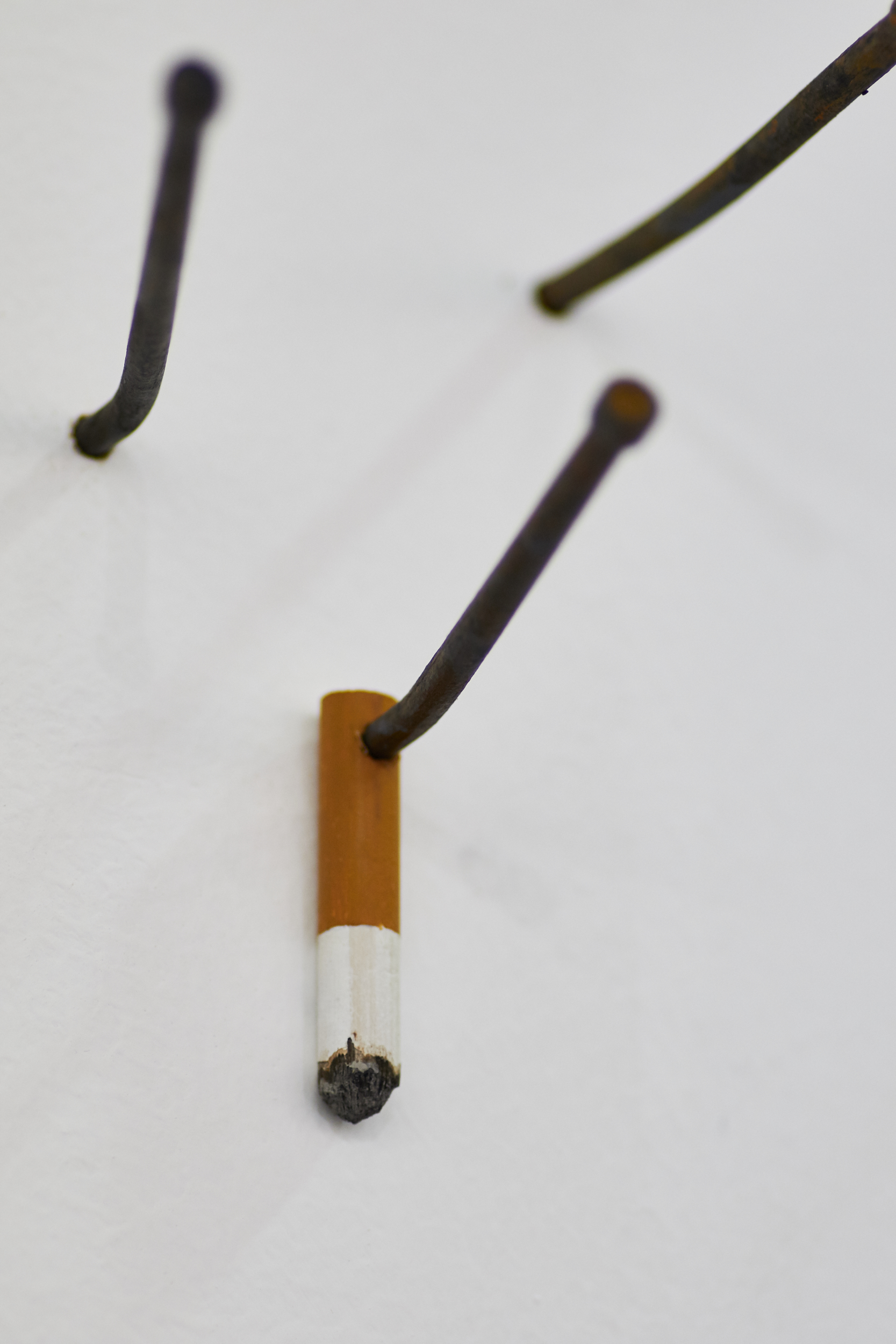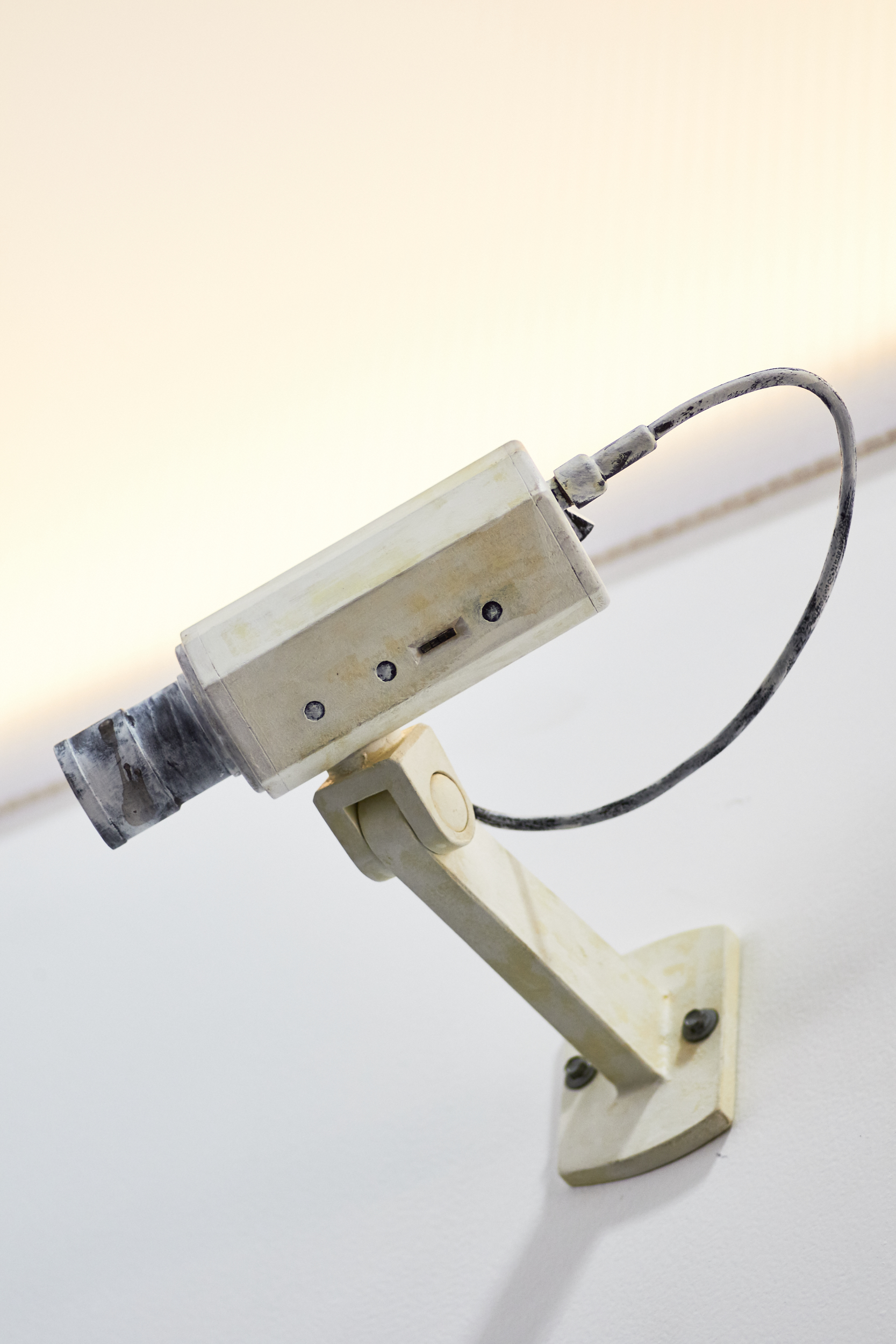Glen Hayward, Everyday People at ACHK17
GLEN HAYWARD
EVERYDAY PEOPLE
ART CENTRAL HONG KONG
21–25 MARCH 2017
PAULNACHE Presents...
GLEN HAYWARD
Everyday People
Art Central Hong Kong
21 - 25 March 2017
The twenty first century, we are so modern.
Can we say ‘we’ anymore or is it a collection of ‘I’s?
Each nail is handmade from wood and painted; there will be over a thousand, they will be scattered across a wall. Like individuals each will be different, the marking, the bentness, but all will share the same name ‘a rusty nail.’ I see a metaphor for us emerging, and like the best metaphors it is an accident, a metaphor for people; in general and in particular, same but different.
Hong Kong rests on an intersection between what used to be called the East and what used to be called the West. The notion of the individual versus the collective rests on an intersection we used to know and now we do not.
Everyday People is a large-scale, site specific solo installation by NZ-born sculptor Glen Hayward, of over 1000+ hand carved rusty nails inserted directly into a feature wall at Art Central Hong Kong 2017.
Glen Hayward was born in 1974 in Auckland New Zealand and is known for his sculptures of everyday, mass-produced items. Carved from wood and painted exactly as they were as found objects, they masquerade as the real. Hayward completed his doctoral dissertation at Auckland University's Elam School of Fine Arts in 2005.
"I work at the intersection of carving and painting, I find all the world of things endlessly fascinating and potentially meaningful.
This way of making solves two tensions, one my tendency to be overwhelmed by the sheer volume of things, the time it takes to carve things limits the number of things I can make. The second is more process based, it acknowledges that selection of the 'thing' reflects a way of understanding the world, as the ready-made enacts. Although the world is fecund the mere presentation of it shows - an angle not all angles. To make a ready-made incites a value for the thing depicted, it permits a physical understanding of the world through making and parallels this through viewing.”

